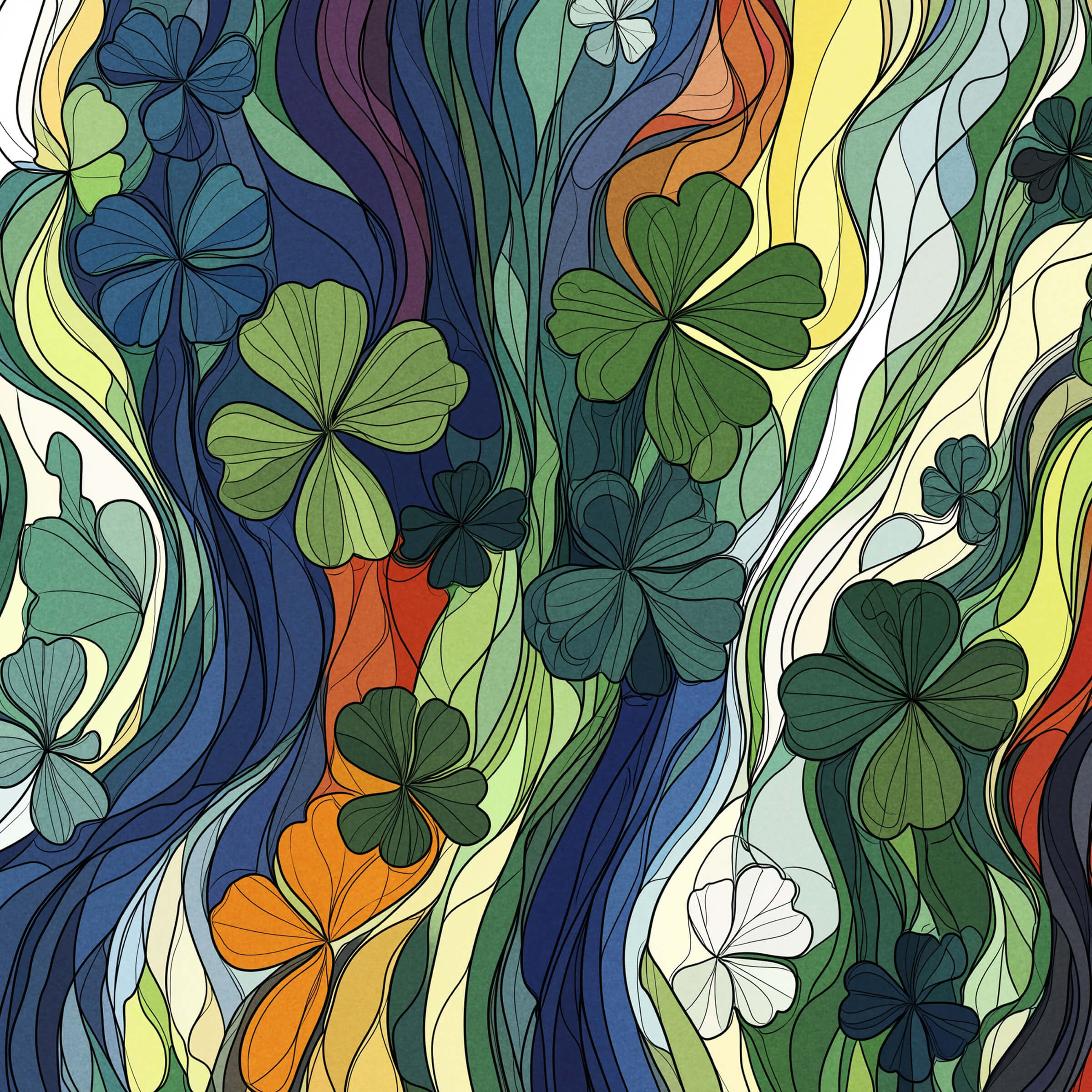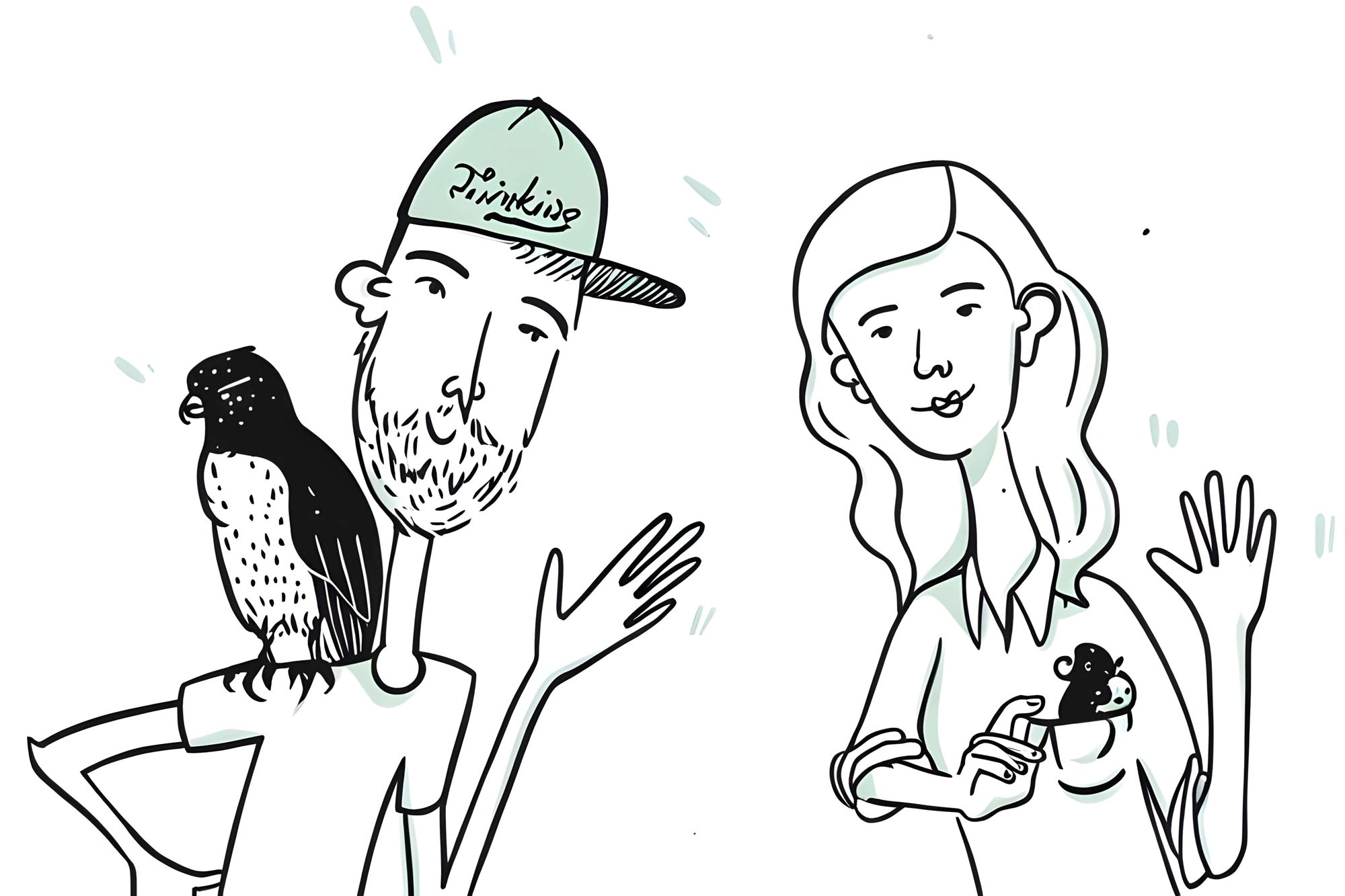
St. Patrick’s Day Facts & Trivia Questions To Charm You
Every March 17, millions of people across the globe don green, raise a pint, and join the sea of parades, all in honor of a man who... *plot twist... wasn’t even Irish. St. Patrick’s Day, named after a Catholic saint, has evolved into a wild blend of Irish heritage pride, folklore, and, yes, a whole lot of beer. But behind the shamrocks and leprechauns lies a deeper history; one that’s equal parts Catholic feast day and a mashup of ancient pagan traditions.
The holiday sits at the crossroads of faith and folklore, where early Christian missionaries borrowed, adapted, and sometimes battled the beliefs of pre-Christian Ireland. It’s a celebration where magic meets myth, where saints banish snakes (allegedly) and rivers turn green (literally). In the fun fact list below, we've got 23 of the wildest facts and tidbits about the holiday–with a trivia question quiz to follow!
Jump to the St. Patrick's Day trivia questions.
St. Patrick Wasn’t Irish And His Name Wasn’t Patrick
St. Patrick, the patron saint of Ireland, was actually born in Roman Britain around 386 CE, not Ireland. His given name was Maewyn Succat, and he only adopted the name Patricius (meaning “father figure”) after becoming a priest. At age 16, he was kidnapped by Irish raiders and sold into slavery, tending sheep for six years before escaping. Despite his traumatic start, he later returned to Ireland as a missionary, earning his iconic status.

The Original Color of St. Patrick’s Day Was Blue, Not Green
Before green took over the holiday, St. Patrick’s Day was actually associated with a soft shade of blue. Now called “St. Patrick’s blue.” It symbolized both the saint and Irish nationalism long before green claimed the spotlight in the 18th century, thanks to its ties to Ireland’s rolling hills and the now-iconic shamrock. Today, rivers are dyed neon green, skyscrapers glow in emerald lights, and blue has been quietly sidelined.
The First St. Patrick’s Day Parades Happened in America, Not Ireland
In an ironic twist, the first St. Patrick’s Day parade didn’t happen in Ireland... it happened in St. Augustine, Florida, in 1601. Irish soldiers in the British army later held their own parades in New York City (1762) and Boston (1737), turning what was once a religious feast into a public celebration. Ireland didn’t host its first parade until 1931, and Belfast waited until 1998. Today, New York City’s parade is the largest in the world, attracting over 2 million spectators, all trying to be a little Irish (even if just for the day).
The Shamrock Was Used by Christian Missionaries to Explain the Holy Trinity
Before it became the unofficial mascot of souvenir shops and St. Patrick’s Day merchandise, the humble shamrock had a more serious job. St. Patrick used its three leaves as a teaching tool to explain the Christian Holy Trinity (Father, Son, and Holy Spirit) to pagan Irish communities. It was simple, visual, and surprisingly effective. While the shamrock became a lasting symbol of Irish identity, it’s not Ireland’s official national emblem. That title belongs to the harp.

Ireland Once Banned Drinking on St. Patrick’s Day
From 1903 to 1970, St. Patrick’s Day was treated strictly as a religious holiday in Ireland, complete with a nationwide pub closure. The shift to the modern, beer-fueled celebration began with Irish immigrants in the U.S., where the holiday was embraced as a cultural pride event. A Lenten loophole allows Catholics to take a break from fasting on March 17, which only added fuel to the drinking tradition.
There Have Never Been Snakes in Ireland; The Ice Age Took Care of That
The classic legend of St. Patrick banishing snakes from Ireland? Total myth. Scientists confirm that snakes never slithered onto the island in the first place, thanks to the last Ice Age making Ireland too cold for reptiles. Even after the ice melted, the surrounding seas kept them out. Historians suggest the “snakes” in the story were actually a metaphor for paganism, which St. Patrick worked to replace with Christianity.

Corned Beef and Cabbage Is an American Creation, Not an Irish Tradition
Corned beef and cabbage might seem like the ultimate Irish dish, but it’s more Lower East Side than Emerald Isle. In 19th-century New York, Irish immigrants swapped expensive pork for cheap beef brisket, curing it with large salt crystals known as “corns.” Paired with affordable cabbage, it became the go-to meal for working-class Irish Americans. Back in Ireland, pork and potatoes remained the staples, leaving corned beef to become an American St. Patrick’s Day tradition.
Leprechauns in Irish Folklore Are Always Male
According to Irish mythology, leprechauns are exclusively male, solitary fairies who spend their time mending shoes and guarding hidden gold. The modern idea of female leprechauns? Total fiction. And if you manage to catch one, folklore promises he’ll grant you three wishes... though he’ll do his best to trick you out of them.
The World’s Shortest St. Patrick’s Day Parade Was Only 98 Feet Long
Hot Springs, Arkansas, claims the title for the world’s shortest St. Patrick’s Day parade, spanning just 98 feet on Bridge Street. Previously, the Irish village of Dripsey held the record with a 25-yard parade between two pubs. These tiny parades contrast with massive spectacles like Chicago’s, where 40 pounds of dye transform the river into a glowing green current.
Chicago’s Green River Uses a Secret, Eco-Friendly Dye (Thank Goodness)
Since 1962, Chicago has dyed its river emerald green for St. Patrick’s Day using a formula that was originally designed to detect pollution. Though it’s now environmentally safe, the exact recipe remains a well-kept family secret, making the annual event a chemical mystery as well as a tourist attraction.

Astronauts Celebrate St. Patrick’s Day in Outer Space
Even in zero gravity, astronauts aboard the International Space Station have kept St. Patrick’s Day alive. Since 2011, they’ve donned green attire and shared photos of Ireland from orbit. The celebration of Irish heritage, it seems, knows no earthly bounds.
“Drowning the Shamrock” Is an Irish Tradition for Good Luck
An old Irish custom known as “drowning the shamrock” involves dropping a shamrock into a glass of whiskey before drinking it as a toast to St. Patrick. Legend has it that the ritual began after St. Patrick reprimanded a bartender for a stingy pour, sparking a tradition of generosity on his feast day.

Americans Spend $7.2 Billion Annually on St. Patrick’s Day Celebrations
St. Patrick’s Day isn’t just about parades and pints, it’s also big business. Americans spend an estimated $7.2 billion annually on the holiday, including $245 million on beer alone. Guinness, in particular, sees sales skyrocket, with about 13 million pints consumed globally on March 17.

Finding a Four-Leaf Clover Has 1-in-10,000 Odds
While the three-leaf shamrock is the holiday’s poster plant, it’s the elusive four-leaf clover that symbolizes good luck. Your chances of finding one? Roughly 1 in 10,000. That rarity has cemented its status as a good luck charm, adding a layer of magical mystique to the St. Patrick’s Day hunt.
St. Patrick Was Once Accused of Financial Misconduct During His Missionary Work
During his time as a missionary, St. Patrick faced criminal charges for alleged financial crimes. He was accused of using his role as bishop for personal gain, though he defended himself by claiming he refused gifts from wealthy women and paid for gifts given to tribal chiefs. Some scholars believe the accusations reflected tensions between Christian missionaries and Ireland’s pagan leaders.
St. Patrick Was Said to Have Battled Druid Sorcerers Using Miracles and Magic Duels
Irish legends portray St. Patrick as more than a missionary. He was a spiritual warrior. In mythological tales, he faced off against Druid wizards, reportedly levitating one into the air and smashing his skull against rocks. In another tale, he won a fire-wielding contest against a Druid, further cementing his image as a force against paganism (for better or worse).

A Tyrannical Irish King Was Turned Into a Fox After Mocking St. Patrick
One bizarre Irish legend tells of King Corictic, who mocked St. Patrick and persecuted Christians. In response, St. Patrick prayed for divine intervention, leading to the king’s transformation into a fox, forcing him to flee into the wilderness. This strange tale reflects the saint’s role as both protector and enforcer in Irish folklore.
Pilgrims Still Visit Lough Derg to Experience St. Patrick’s Purgatory
According to legend, St. Patrick once opened a portal to Purgatory at Lough Derg in Ireland, allowing pilgrims to witness the torments of the afterlife. Today, people still visit Station Island for a three-day, barefoot pilgrimage of fasting and prayer, one of Christianity’s most grueling spiritual journeys.

St. Patrick Was Believed to Have Raised 33 People from the Dead
Medieval texts credit St. Patrick with resurrecting 33 people, some of whom had been dead for years. These miracles helped fuel his sainthood and strengthened the belief in his divine powers, though historians view these stories as part of the myth-making process around his legacy.
The Lorica, or “St. Patrick’s Breastplate,” Was a Mystical Prayer of Protection
A legend tells of Druids ambushing St. Patrick and his followers, leading them to sing the Lorica, a prayer believed to shield them from harm. The hymn’s opening line, “Christ with me, Christ before me”, became a staple of Celtic Christian tradition, merging myth and liturgy.

St. Patrick’s Iron Bell Was Said to Have Driven Demons Out of Ireland
St. Patrick’s bell wasn’t just a call to prayer, it was believed to have banished demons. During his retreats to Croagh Patrick, he reportedly rang the bell to repel dark spirits, with the sound echoing across the land. The bell, now displayed in Dublin’s National Museum, became a relic of his spiritual battles.
St. Patrick’s Bonfire Was a Bold Defiance of Pagan Law
In one of the most iconic moments of his life, St. Patrick lit a Paschal fire on the Hill of Slane during Easter, directly defying King Laoghire’s decree that no fires be lit before the pagan Beltane festival. When the king’s men failed to extinguish the flame, said to be protected by divine intervention, it solidified Patrick’s role in bringing Christianity to Ireland.
St. Patrick’s Day Once Had Strong Ties to Irish Political Rebellions
In the 18th and 19th centuries, St. Patrick’s Day parades in America weren’t just celebrations... they were often platforms for Irish nationalist movements. Groups like NORAID used these gatherings to support Irish independence and, later, fundraise for the Irish Republican Army during the Troubles.
St. Patrick’s Day Trivia Questions
1. What country was St. Patrick actually born in?
Roman Britain (modern-day Wales or Scotland)
2. Before green became the official color of St. Patrick’s Day, what color was originally associated with the holiday?
Blue (specifically "St. Patrick’s blue")
3. In what U.S. city did the first-ever St. Patrick’s Day parade take place?
St. Augustine, Florida (in 1601)
4. According to legend, what plant did St. Patrick use to explain the concept of the Holy Trinity to pagan Irish communities?
The Shamrock
5. From 1903 to 1970, what activity was actually banned in Ireland on St. Patrick’s Day?
Drinking alcohol (pubs were legally closed for the day)
6. True or False: St. Patrick really did drive all the snakes out of Ireland.
False (Ireland never had snakes; it’s a metaphor for driving out paganism)
7. Which American city dyes its river green every St. Patrick’s Day?
Chicago
8. What meal, often associated with Irish tradition, is actually an American invention?
Corned beef and cabbage
9. According to folklore, leprechauns are known for hoarding gold—but are they always male, always female, or either?
Always male
10. Where can you find the world’s shortest St. Patrick’s Day parade, stretching just 98 feet?
Hot Springs, Arkansas
11. What is the name of the Irish tradition where you dunk a shamrock into whiskey before drinking it for good luck?
Drowning the Shamrock
12. On average, how many pints of Guinness are consumed globally on St. Patrick’s Day?
About 13 million pints
13. What’s the chance of finding a four-leaf clover in the wild?
1 in 10,000
14. Which group used early St. Patrick’s Day parades in New York City as a platform for political protest and later fundraising for Irish independence?
Irish nationalist groups, like NORAID
15. In Irish folklore, what animal was a tyrannical king turned into after mocking St. Patrick?
A fox
If you thought this article on St. Patrick’s Day was packed with unexpected twists, wait until you dive into the surprising stories behind other holidays. Check out our Christmas Fun Facts for a sleigh-full of history, magic, and strange traditions, or explore Valentine’s Day Fun Facts to find out why Cupid has been meddling in our love lives for centuries.





